When it is determined that your child may benefit from doing exercises, physical therapists, also called physiotherapists, will help your child overcome challenges and may show you some exercises. Once your child is at home, they may need to continue using the services of a physiotherapist in the community.
The physiotherapist will recommend any equipment that might be required for your child to use at home to help them move around your home and in the community safely. The therapist can also help with arranging for physiotherapy in the community if needed.
Neck exercises after neurosurgery
After neurosurgery (brain surgery), it is common for your child’s neck muscles to be sore and they may not be able to move their neck very far. Your child’s physiotherapist will choose which exercises are the most appropriate after surgery and will ensure you know how to do them correctly.
A few points to remember:
- These exercises are commonly used but might not be included in your child’s individualized program.
- Your child should do all the movements by themself — do not stretch your child’s neck.
- If your child is too young to perform exercises on their own, your physiotherapist will give you the appropriate instruction on activities that will help your child regain neck movement.
- Your child should do these exercises while sitting down, with their arms resting comfortably on their lap.
- Each exercise should be done until your child feels a mild discomfort from the stretch.
- You might find it helpful to sit in front of your child and place your hands on their shoulders to prevent their shoulders from moving. This ensures that the movement comes from your child’s neck.
Try these neck exercises:
-
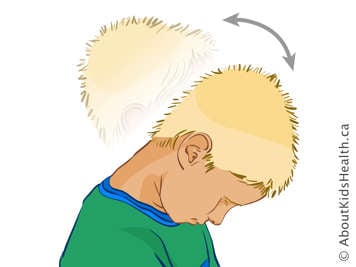
Neck flexion: Have your child slowly bring their chin towards their chest. Hold for 10 seconds and straighten back to the starting position.
-
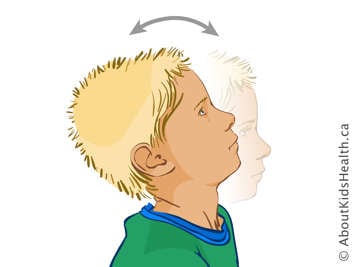
Next extension: Have your child slowly look up towards the ceiling. Hold for 10 seconds and return to the starting position.
-
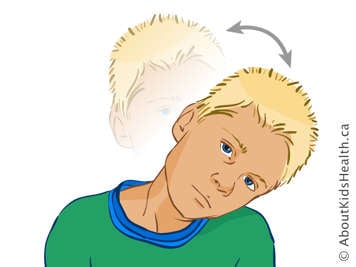
Neck side flexion: Have your child slowly bring their ear towards their shoulder on the right side. Hold for 10 seconds and bring the head back upright. Repeat to the left side. Make sure your child doesn’t lift their shoulder up to touch their ear.
-
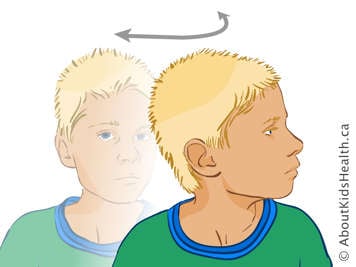
Neck rotation: Have your child slowly turn their chin towards their shoulder on the right side. Hold for 10 seconds and return to face forward. Repeat slowly on the other side.
Balance exercises after neurosurgery
Your child might find it more difficult to balance because of the tumour, the surgery, or both. You can help your child to do some exercises to improve their balance when they go home from the hospital. Check with your child’s physiotherapist before doing these.
A few points to remember:
- Make sure that an adult is always present.
- Do these activities a few times a day.
- Pick 2 or 3 activities to work on at a time.
- These exercises are generally suitable for children aged 5 and up and for children who are able to walk safely on their own without losing their balance.
- If your child cannot safely walk on their own, your physiotherapist will give you different exercises.
Try these balance exercises:
-
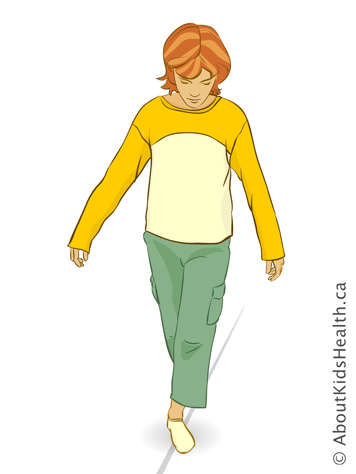
Practise walking on a curb with 1 foot in front of the other. Or put a piece of masking tape on the ground/floor and practice walking with 1 foot in front of the other.
-
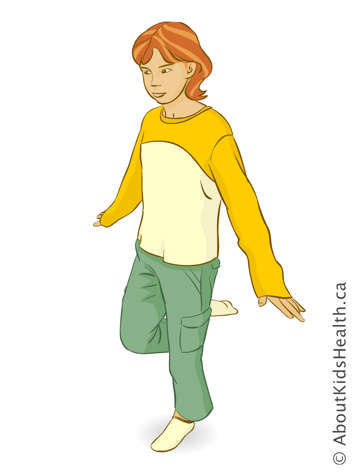
Practise standing on 1 leg. Count how long your child can hold this position. Try to beat this record each time.
-

Once your child can balance on 1 leg easily, stand on the right leg and practise bending the right knee 5 times. Repeat with the left leg.
-
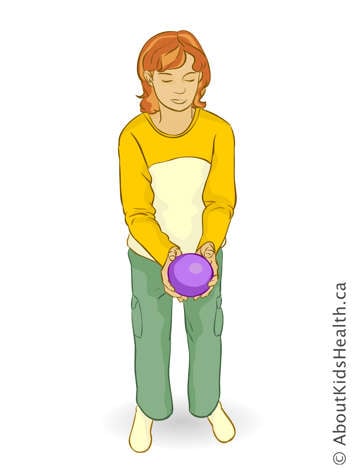
Play catch with your child. Once they can do this, make it more challenging by throwing the ball to the right or left side, up high or down low.
-
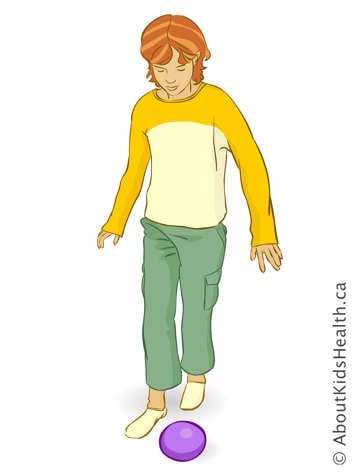
Practise kicking a ball with your child. Make it more challenging by kicking the ball to your right or left side so that they have to step and reach for the ball.
-

Practise walking backwards or sideways.
-
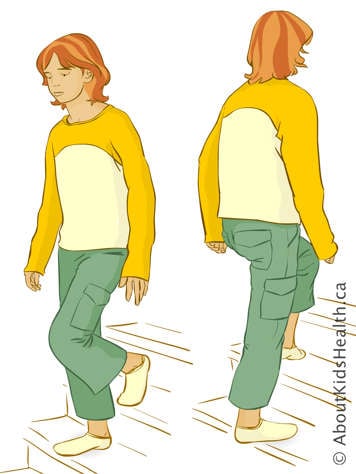
Practise walking upstairs or downstairs without holding onto a railing.
-

Practise walking on the toes and on the heels.
-
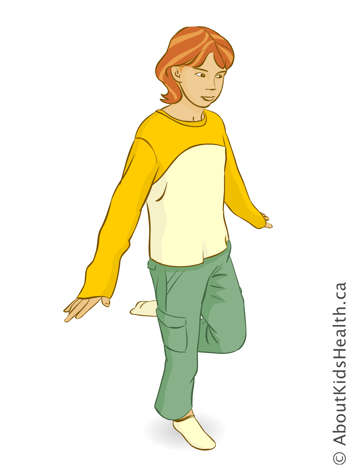
Practise playing "Simon says" with your child. Use different movements to make it harder if it gets too easy.
-
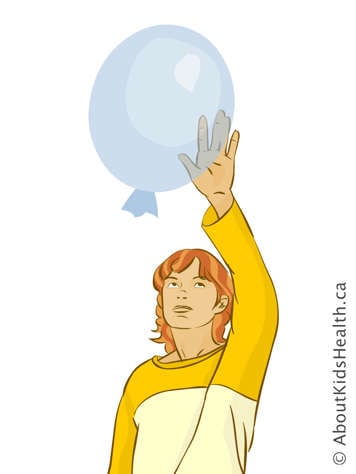
Practise hitting a balloon back and forth with your child. Make sure there is lots of open space to avoid tripping.
-
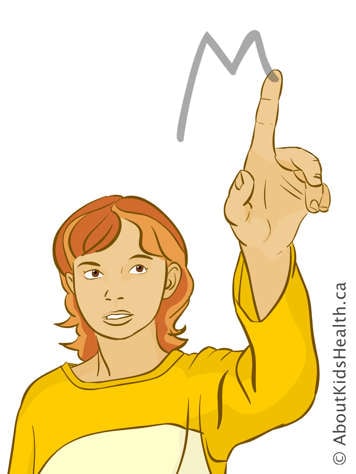
Practise drawing numbers or letters in the air with the arms or legs.
-
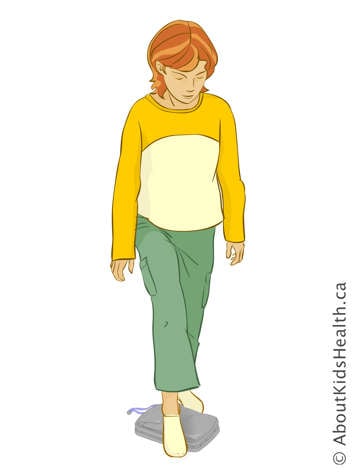
Practise stepping up onto a step and back down again. When this becomes too easy, practise stepping over a small object and then back over it again.